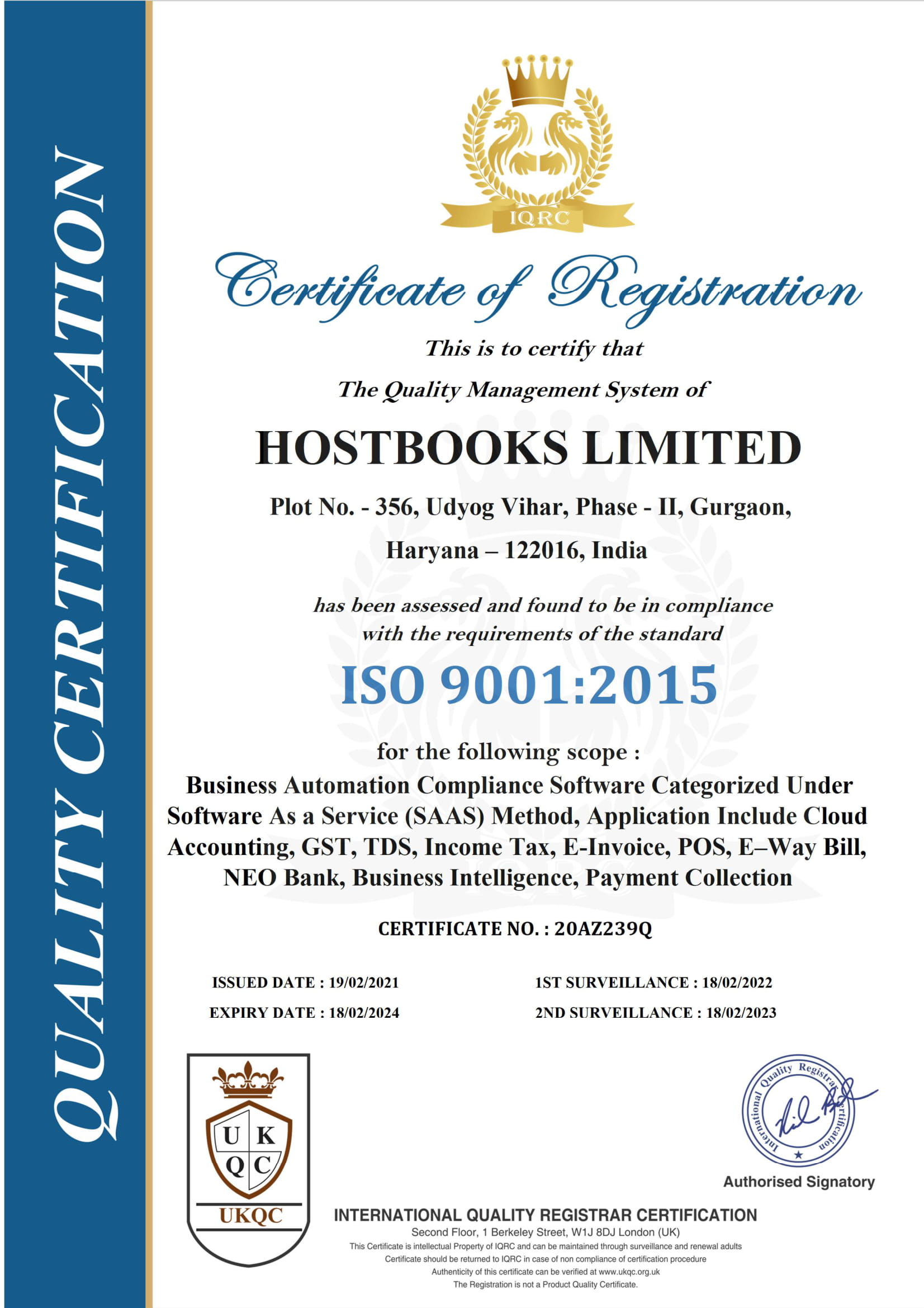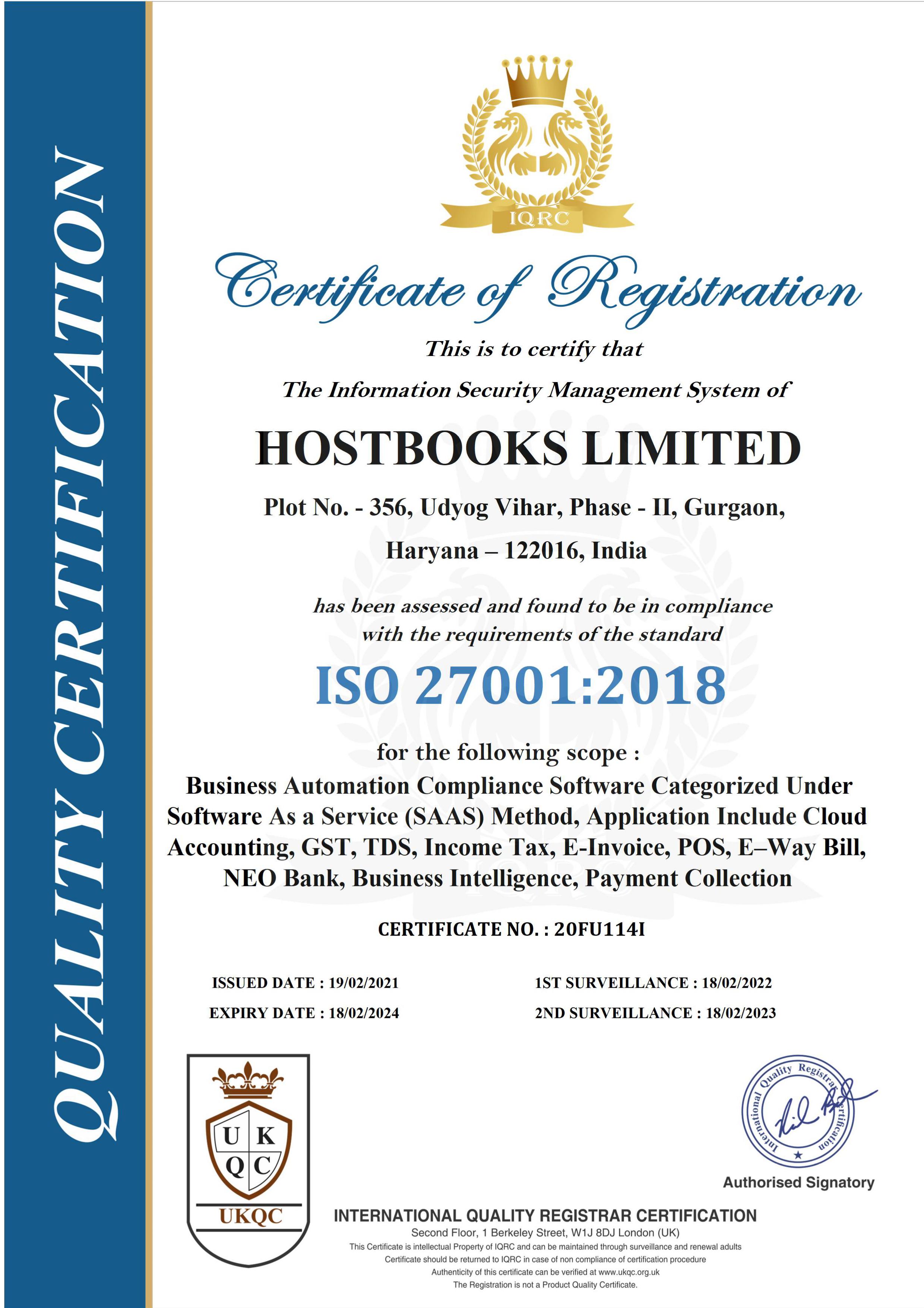Capital Gains
Capital Gains Tax in India
Did you sell any immovable property, shares, mutual funds or any other Capital Asset? You’ll be liable to Capital Gains Tax and must disclose such income under the head “Capital Gains”.
Are you looking forward to saving such Capital Gains Tax? You can easily save your tax by investing in schemes under Section 54, 54F, 54EC, etc. We’ll discuss Capital Gains in detail in the aforesaid article.
What are Capital Gains?
Section 45 of Income Tax Act, 1961 provides that any profits or gains arising from the transfer of a capital asset effected in the previous year will be chargeable to income-tax under the head ‘Capital Gains’. Such capital gains will be deemed to be the income of the previous year in which the transfer took place. In this charging section, two terms are important. One is “capital asset” and the other is “transfer”.
What is a Capital Asset?
According to section 2(14), a capital asset means –
(a) property of any kind held by an assessee, whether or not connected with his business or profession;
(b) any securities held by a Foreign Institutional Investor which has invested in such securities in accordance with the SEBI regulations.
However, it does not include—
(i) Any stock-in-trade [other than securities referred to in (b) above], consumable stores or raw materials held for the purpose of the business or profession of the assessee;
(ii) Personal effects, that is to say, movable property (including wearing apparel and furniture) held for personal use by the assessee or any member of his family dependent on him, but excludes –
(a) Jewelry;
(b) Archaeological collections;
(c) Drawings;
(d) Paintings;
(e) Sculptures; or
(f) Any work of art.
(iii) Rural agricultural land in India
(iv) 6½% Gold Bonds, 1977, or 7% Gold Bonds, 1980, or National Defence Gold Bonds, 1980, issued by the Central Government;
(v) Special Bearer Bonds, 1991 issued by the Central Government;
(vi) Gold Deposit Bonds issued under the Gold Deposit Scheme, 1999 notified by the Central Government.
Rural Agricultural Land shall mean:-
Only rural agricultural lands in India are excluded from the purview of the term ‘capital asset’. Hence urban agricultural lands constitute capital assets. Transfer of agricultural land situated in any area within the jurisdiction of a municipality or cantonment board having a population of 10000 or more shall be chargeable to “Capital Gains” including the following limits:-
(i) Aerial distance from the local limits of a municipality or cantonment board ≤ 2 kilometers & corresponding population is > 10,000 ≤ 1,00,000
(ii) Aerial distance from the local limits of a municipality or cantonment board ≤ 6 kilometers & corresponding population is > 1,00,000 ≤ 10,00,000
(iii) Aerial distance from the local limits of a municipality or cantonment board ≤ 8 kilometers & corresponding population is > 10,00,000
Short Term and Long Term Capital Assets
The short-term capital asset is a capital asset held by an assessee for not more than 36 months immediately preceding the date of its transfer. Therefore, a capital asset held by an assessee for more than 36 months immediately preceding the date of its transfer is a long-term capital asset.
However, a security (other than a unit) listed in a recognized stock exchange, or a unit of an equity oriented fund or a unit of the Unit Trust of India or a Zero Coupon Bond will be considered as a long-term capital asset if the same is held for more than 12 months immediately preceding the date of its transfer. In the case of Immovable Property (land or building or both) hold for more than 24 months then it will be treated as a long-term capital asset.
This implies that an unlisted security and unit of a debt-oriented mutual fund would qualify as a “long-term capital asset” and be eligible for the benefit of indexation and a concessional rate of tax@20% only if it is held for “more than 36 months”.
Tax on Long-Term Capital Gains
Where securities transaction tax is applicable (in case of equity shares and equity-oriented MF): If securities transaction tax is applicable, the long-term capital gain is taxable at the rate of 10% + Surcharge and Education Cess. Although such capital gain up to Rs.1,00,000 is not taxable under section 112A.
In all other cases: The long-term capital gain is taxable at 20% + Surcharge and Education Cess.
Tax on Short-Term Capital Gains
Where securities transaction tax is applicable (in case of equity shares and equity-oriented MF): If securities transaction tax is applicable, the short-term capital gain is taxable at the rate of 15% + Surcharge and Education Cess.
In all other cases: The short-term capital gain is taxable according to the income tax slab rate.
How to calculate Period of Holding?
There are few points to be noted in regards to the period of holding of a Capital Asset:-
(i) In the case of a share held in a company in liquidation, the period subsequent to the date of liquidation should be excluded.
(ii) The period for which the asset was held by the previous owner should be taken into account. For example, the distribution of assets on the partition of HUF, in case of a gift, succession, inheritance, etc.
(iii) In the case of shares held in an amalgamated company in lieu of shares in the amalgamating company, the period will be counted from the date of acquisition of shares in the amalgamating company.
(iv) In the case of a capital asset being a share or any other security or a right to subscribe to any share or security where such right is renounced in favor of any other person, the period shall be calculated from the date of allotment of such share or security or from the date of offer of such right by the company or institution concerned.
(v) In the case of a capital asset, being a financial asset, allotted without any payment and based on holding of any other financial asset the period shall be reckoned from the date of the allotment of such financial asset.
(vi) In the case of a capital asset being shared in an Indian company, which becomes the property of the assessee in consideration of a demerger, the period of holding shall include the period for which the shares were held in the demerged company by the assessee.
(vii) In the case of a capital asset being equity shares, or trading or clearing rights, of a stock exchange acquired by a person pursuant to demutualization or corporatization of a recognized stock exchange in India as referred to in clause (xiii) of section 47, there shall be included while calculating the period of holding of such assets the period, for which the person was a member of the recognized stock exchange immediately before such demutualization or corporatization.
(viii) In the case of a capital asset, being any specified security or sweat equity shares allotted or transferred, directly or indirectly, by the employer free of cost or at concessional rate to his employees (including former employee or employees), the period shall be reckoned from the date of allotment or transfer of such specified security or sweat equity shares. Specified security” means the securities as defined in section 2(h) of the Securities Contracts (Regulation) Act, 1956 and, where employees’ stock option has been granted under any plan or scheme thereof, includes the securities offered under such plan or scheme. “Sweat equity shares” means equity shares issued by a company to its employees or directors at a discount or for consideration other than cash for providing know-how or making available rights in the nature of intellectual property rights or value additions, by whatever name called.
(ix) In the case of a capital asset, being a unit or units, which becomes the property of the assessee in consideration of a transfer referred to in section 47(xviii), there shall be included the period for which the unit or units in the consolidating scheme of the mutual fund were held by the assessee;
(x) In the case of a capital asset, being share or shares of a company, which is acquired by the non-resident assessee on redemption of Global Depository Receipts [issued in accordance with a notified scheme against the initial issue of shares of an Indian company/issue of existing shares of an Indian company/shares of a public company sold by the Government, and purchased by the non-resident assessee in foreign currency through an approved intermediary] held by such assessee, the period shall be reckoned from the date on which a request for such redemption was made.
In respect of capital assets other than those listed above, the period of holding shall be determined subject to any rules which the Board may make in this behalf.
What are the types of Transfer in relation to Capital Asset?
Section 2(47) provides an inclusive definition of “transfer”, in relation to a capital asset.
(i) The sale, exchange or relinquishment of the asset; or
(ii) The extinguishment of any rights therein; or
(iii) The compulsory acquisition thereof under any law; or
(iv) The owner of a capital asset may convert the same into the stock-in-trade of a business carried on by him. Such conversion is treated as a transfer; or
(v) The maturity or redemption of a Zero Coupon Bond; or
(vi) Part-performance of the contract: Sometimes, possession of the immovable property is given in consideration of part-performance of a contract; or
(Vii) Lastly, there are certain types of transactions that have the effect of transferring or enabling the enjoyment of the immovable property. Even the power of attorney transactions is covered.
Explanation 2 to section 2(47) clarifies that ‘transfer’ includes and shall be deemed to have always included:
1. Disposing of or parting with an asset or any interest therein, or
2. Creating any interest in any asset in any manner whatsoever
- Directly or indirectly, - absolutely or conditionally, - voluntarily or involuntarily by way of an agreement (whether entered into in India or outside India) or otherwise.
Scope and Year of Chargeability
(i) Receipts from insurance parties [Section 45(1A)]:- Where any person receives any money or other assets under any insurance from an insurer, then, any profits or gains arising from receipt of such money or other assets shall be treated as “Capital gains” and shall be deemed to be the income of such person in the year of receipt.
(ii) Conversion or treatment of a capital asset as stock-in-trade [Section 45(2)]:- Such a transaction is a transfer. The profits or gains arising from such conversion or treatment will be chargeable to income-tax as his income of the previous year in which such stock-in-trade is sold or otherwise transferred by him.
(iii) Transfer of beneficial interest in securities [Section 45(2A)]:- Where any person has had at any time during the previous year any beneficial interest in any securities, then, any profits or gains arising from the transfer made by the Depository or participant of such beneficial interest in respect of securities shall be chargeable to tax as the income of the beneficial owner of the previous year in which such transfer took place and shall not be regarded as income of the depository who is deemed to be the registered owner of the securities by virtue of section 10(1) of the Depositories Act, 1996.
(iv) Introduction of capital asset as capital contribution [Section 45(3)]:- With the transfer of a capital asset to a firm, AOP or BOI as capital contribution or otherwise, the profits or gains arising from such transfer will be chargeable to tax as income of the previous year in which such transfer takes place.
(v) Distribution of capital assets on a firm’s dissolution [Section 45(4)]:- With the transfer of capital assets by way of distribution of capital assets on the dissolution of a firm or AOP or BOI or otherwise shall be chargeable to tax as the income of the firm etc. of the previous year in which such transfer takes place. For this purpose, the fair market value of the asset on the date of such transfer shall be the full value of consideration.
(vi) Compensation on compulsory acquisition [Section 45(5)]:- When the Central Government pays compensation for compulsory acquisition of a building or some other capital asset belonging to a person, capital gains may arise. Such capital gains are chargeable as income of the previous year in which such compensation is received.
Enhanced Compensation: If the court awards compensation which is higher than the original compensation, the difference thereof will be chargeable to capital gains in the year in which the same is received from the government.
What are the Transactions which are not regarded as Transfer?
For the whole list of Transactions, Click here.
Mode of computation of capital gains
(i) The income chargeable under the head ‘capital gains’ shall be computed by deducting the following items from the full value of the consideration received or accruing as a result of the transfer of the capital asset:
(1) Expenditure incurred wholly and exclusively in connection with such transfer.
(2) The indexed cost of acquisition and indexed cost of any improvement thereto.
(ii) However, no deduction shall be allowed in computing the income chargeable under the head “Capital Gains” in respect of any amount paid on account of securities transaction tax under Chapter VII of the Finance (No.2) Act, 2004.
As per section 48, the cost of acquisition will be increased by applying the Cost Inflation Index (CII). Once the cost inflation index is applied to the cost of acquisition, it becomes an indexed cost of acquisition. This means an amount which bears to the cost of acquisition, the same proportion as CII for the year in which the asset is transferred bears to the CII for the first year in which the asset was held by the assessee or for the year beginning on 1st April 2001, whichever is later.
Similarly, indexed cost of any improvement means an amount which bears to the cost of the improvement, the same proportion as CII for the year in which the asset is transferred bears to the CII for the year in which the improvement to the asset took place.
(iii) Cost Inflation Index: The cost inflation indices for the financial years so far have been notified as under:
| Sl. No. | Financial Year | Cost Inflation Index |
|---|---|---|
| (1) | (2) | (3) |
| 1 | 2001-02 | 100 |
| 2 | 2002-03 | 105 |
| 3 | 2003-04 | 109 |
| 4 | 2004-05 | 113 |
| 5 | 2005-06 | 117 |
| 6 | 2006-07 | 122 |
| 7 | 2007-08 | 129 |
| 8 | 2008-09 | 137 |
| 9 | 2009-10 | 148 |
| 10 | 2010-11 | 167 |
| 11 | 2011-12 | 184 |
| 12 | 2012-13 | 200 |
| 13 | 2013-14 | 220 |
| 14 | 2014-15 | 240 |
| 15 | 2015-16 | 254 |
| 16 | 2016-17 | 264 |
| 17 | 2017-18 | 272 |
| 18 | 2018-19 | 280 |
| 19 | 2019-20 | 289 |
(iv) Special provision for non-residents - In order to give protection to non-residents who invest foreign exchange to acquire capital assets, section 48 contains a proviso. Accordingly, in the case of non-residents, capital gains arising from the transfer of shares or debentures of an Indian company is to be computed as follows: The cost of acquisition, the expenditure incurred wholly and exclusively in connection with the transfer and the full value of the consideration are to be converted into the same foreign currency with which such shares were acquired. The resulting capital gains shall be reconverted into Indian currency. The aforesaid manner of computation of capital gains shall be applied for every purchase and sale of shares or debentures in an Indian company. Rule 115A is relevant for this purpose. Non-residents and foreign companies to be subject to tax at a concessional rate of 10% (without indexation benefit or currency fluctuation) on long-term capital gains arising from the transfer of unlisted securities [Section 112]
Cost of improvement [Section 55]
(1) Goodwill of a business, etc.: In relation to a capital asset being goodwill of a business or a right to manufacture, produce or process any article or thing, or right to carry on any business, the cost of the improvement shall be taken to be Nil.
(2) Any other capital asset:
(i) Where the capital asset became the property of the previous owner or the assessee before 1-4-2001, the cost of improvement means all expenditure of a capital nature incurred in making any addition or alteration to the capital asset on or after the said date by the previous owner or the assessee.
(ii) In any other case, the cost of improvement means all expenditure of a capital nature incurred in making any additions or alterations to the capital assets by the assessee after it became his property. However, there are cases where the capital asset might become the property of the assessee by any of the modes specified in section 49(1). In that case, the cost of improvement means capital expenditure in making any addition or alterations to the capital assets incurred by the previous owner.
However, cost of improvement does not include any expenditure which is deductible in computing the income chargeable under the head “Income from house property”, “Profits and gains of business or profession” or “Income from other sources”.
Cost of Acquisition [Section 55]
(i) Goodwill of a business or a trademark or brand name associated with a business or a right to manufacture, produce or process any article or thing, or right to carry on any business, tenancy rights, stage carriage permits and loom hours - In the case of the above capital assets, if the assessee has purchased them from a previous owner, the cost of acquisition means the amount of the purchase price. For example, if a purchase a stage carriage permit from B for 2 lakh, that will be the cost of acquisition for A.
(ii) Self-generated assets - There are circumstances where it is not possible to visualize the cost of acquisition. For example, suppose a doctor starts his profession. Over time, the doctor acquires a lot of reputation. He opens a clinic and runs it for 5 years. After 5 years he sells the clinic to another doctor for ₹ 10 lakh which includes ₹ 2 lakh for his reputation or goodwill. Now a question arises as to how to find out the profit in respect of goodwill. It is obvious that goodwill is self-generated and hence it is difficult to calculate the cost of its acquisition. However, it is certainly a capital asset.
(iii) Other assets - In the following cases, the cost of acquisition shall not be nil, but will be deemed to be the cost for which the previous owner of the property acquired it:
Where the capital asset became the property of the assessee—
(1) On any distribution of assets on the total or partial partition of a Hindu undivided family.
(2) Under a gift or will.
(3) By succession, inheritance or devolution.
(4) On any distribution of assets on the liquidation of a company.
(5) Under a transfer to a revocable or an irrevocable trust.
(6) Under any such transfer referred to in sections 47(iv), (v), (vi), (via) or (viaa).
(7) Where the assessee is a Hindu undivided family, by the mode referred to in section 64(2).
(iv) Financial assets - Many times persons who own shares or other securities become entitled to subscribe to any additional shares or securities. Further, they are also allotted additional shares or securities without any payment. Such shares or securities are referred to as financial assets in the Income-tax Act. Section 55 provides the basis for ascertaining the cost of acquisition of such financial assets.
(v) Any other capital asset –
1. Where the capital asset became the property of the assessee before 1-4-2001 cost of acquisition means the cost of acquisition of the asset to the assessee or the fair market value of the asset on 1-4-2001 at the option of the assessee.
2. Where the capital asset became the property of the assessee by any of the modes specified in section 49(1), it is clear that the cost of acquisition to the assessee will be the cost of acquisition to the previous owner. Even in such cases, where the capital asset became the property of the previous owner before 1-4-2001, the assessee has got a right to opt for the fair market value as on 1-4-2001.
3. Where the capital asset became the property of the assessee on the distribution of the capital assets of a company on its liquidation and the assessee has been assessed to capital gains in respect of that asset under section 46, the cost of acquisition means the fair market value of the asset on the date of distribution.
4. A share or a stock of a company may become the property of an assessee under the following circumstances:
a) The consolidation and division of all or any of the share capital of the company into shares of larger amount than its existing shares.
b) The conversion of any shares of the company into stock,
c) The re-conversion of any stock of the company into shares,
d) The sub-division of any of the shares of the company into shares of smaller amount, or
e) The conversion of one kind of shares of the company into another kind.
In the above circumstances, the cost of acquisition to the assessee will mean the cost of acquisition of the asset calculated with reference to the cost of acquisition of the shares or stock from which such asset is derived.
(vi) Where the cost for which the previous owner acquired the property cannot be ascertained, the cost of acquisition to the previous owner means the fair market value on the date on which the capital asset became the property of the previous owner.
Exemptions available under Long-Term Capital Gains:
The exemptions available on long-term capital gains are:
Profit on sale of the residential house (Section 54):
If the residential house property, whether it is self-occupied or rented out is sold, you can avail full exemption, provided:
- The assessee must be an individual or Hindu Undivided Family.
- The assessee has held the house for more than 24 months.
- The assessee has purchased a new house one year before the date of sale or two years after the date of sale of the original house or if he is constructing a new house, within 3 years from the date of sale of the original house.
- If the amount is deposited in a bank under the Capital Gains Account Scheme, 1988.
- If the cost of the new house is equal to or more than the capital gain earned.
- If the cost of the new house is less than the capital gain, then the difference amount is taxed at 20%.
- If the new house is sold within 3 years from the date of purchase or construction, then the cost of the new house is deducted by the amount of capital gain exempted on the original house and the difference in the sale price of the new house will be treated as a short-term capital gain.
If the long-term capital gain is invested in long-term specified assets of NHAI or Rural Electrification Corporation or Other bonds notified by Central Govt. (Section 54EC):
It is available subject to the following:
- The profit earned is from the sale of a long-term capital asset I.e. land or building or both.
- The assessee must invest a part of the capital gain or the whole of the gain in specified assets like bonds of NHAI or REC or Other bonds notified by Central Govt. within 6 months from the date of sale of the original asset.
- Assessee can invest a maximum of Rs. 50 lakh in specified bonds in a financial year.
- The assessee must retain the new asset for a minimum of 3 years (5 years if the bond is issued on or after 1st April 2018).
Profits from the sale of an asset other than a residential house are used to buy a residential house (Section 54F):
This is available subject to the following conditions:
- The assessee must be an individual or a Hindu Undivided Family.
- The long-term capital gain should be from the sale of an asset that is not a residential house.
- The assessee has purchased a new house one year prior to the date of sale or two years after the date of sale of the original house or if he is constructing a new house, within a period of 3 years from the date of sale of the original house.
- If the cost of the new house is not less than the value of the asset sold, the full amount of capital gain is exempt from income tax. But If a part of the capital gain is invested, then only that part will be exempted proportionately (I.e. cost of the new house * capital gain amount /Net consideration) and the balance amount will be taxable @ 20%.
- If the full amount is not invested to buy a house or construct a house then it should be kept in the bank under Capital Gains Account Scheme, 1988. The deposit amount in that account should be utilized for the construction of a house or to buy a new house.
- On the date of sale of the original asset, the assessee should not own more than one residential house apart from the new house. He should also not buy another house in 2 years or construct a new house in 3 years after such date (apart from the new house).
Other Exemptions:
The following are the other exemptions allowed on capital gains (short-term or long-term):
- Section 54B: The capital gain earned on the sale of agricultural land will have to be reinvested in the purchase of agricultural land. The land must be used for agricultural purposes for at least 2 years immediately before the transfer. If the capital gain is higher than the amount of purchase cost of the new agricultural land then the remaining balance will be taxed. If the capital gain is less than the purchase cost of the new agricultural land then no tax will be charged.
- Section 54D: Exemption is allowed for capital gain arising from industrial land or building that has been compulsorily acquired by the Government. The asset should have been used for the industrial purpose for 2 years immediately before the transfer. The exemption is allowed only if the capital gain will be reinvested to acquire land or building for the industrial purpose.
- Section 54G: Exemption is allowed on the capital gain arising from the transfer of land, building, plant or machinery to shift an industrial undertaking from the urban area to the rural area. The exemption is allowed provided the capital gain is reinvested to acquire land, building, plant or machinery in a rural area.
- Section 54GA: Exemption is allowed on the capital gain arising from the transfer of land, building, plant or machinery to shift an industrial undertaking from the urban area to Special Economic Zone provided the gain is reinvested to acquire land, building, plant or machinery in the Special Economic Zone.














